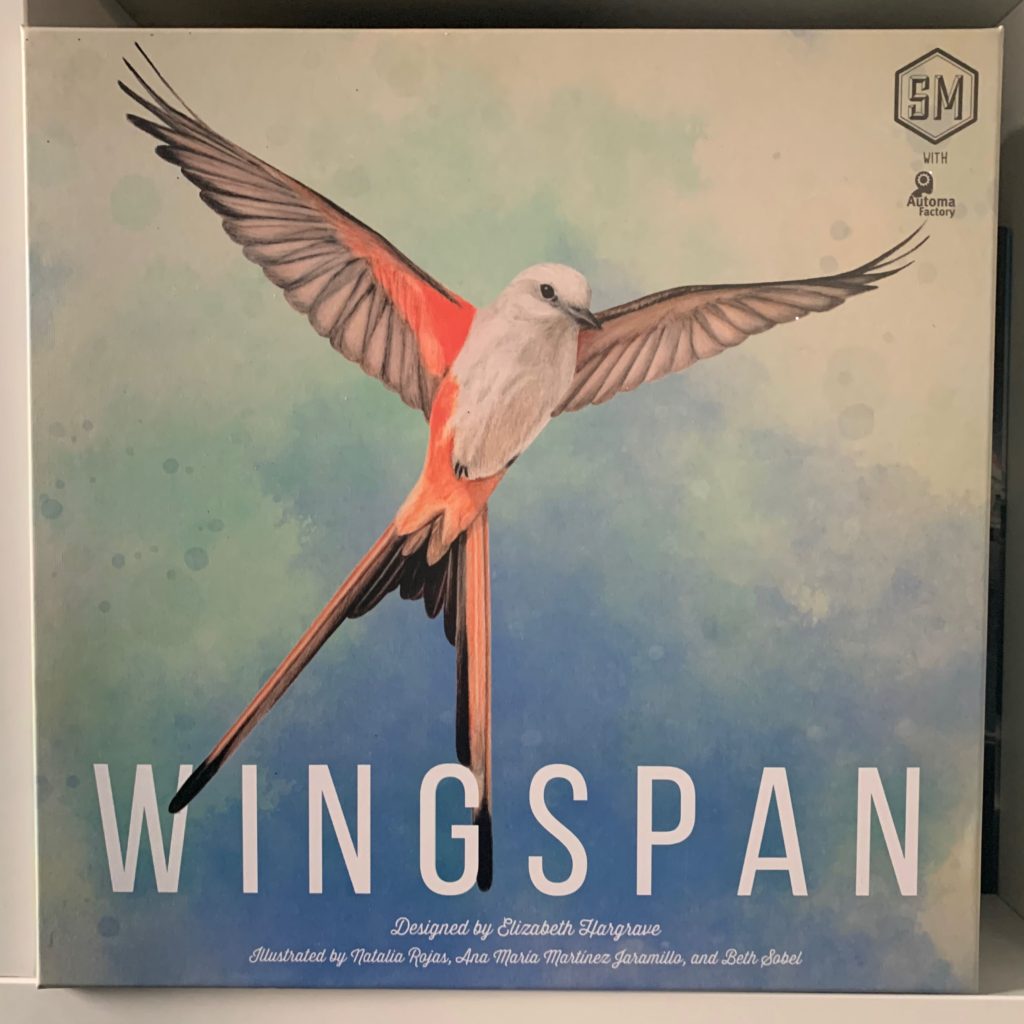
I have to be honest, when I first saw Wingspan back in 2019 I really did not pay much attention to it. The theme just did not really capture me despite the popularity of the game. I would pass by it at my local game store, pick it up off the shelf and think “what is so good about this bird game” and put it back. It would be in my cart when there were online sales going on but I would never pull the trigger on it. So I am pretty late to the party for this review but if the game can convert me to a believer I am sure there are some others that are on the fence that this review may sway one way or the other.
Wingspan Overview
Wingspan is a tableau engine building game for 1 to 5 players, designed by Elizabeth Hargrave and published by Stonemaier Games. In the game, players are birdwatchers trying to populate the best collection of birds for their habitat. The object of Wingspan is to be the player with the most points after 4 rounds of play. Points are collected in many different ways that I will go into later, but in order to get these points players will have to collect, play, and action bird cards in their tableau. These cards then stay in place for each round and as the rounds progress, players will create bigger and bigger combos scoring more points for the end of the game. This is engine building 101 for those that are not familiar with this particular type of game.
Setup
Wingspan setup is pretty quick. The food dice are loaded into the bird feeder and the round goals board is set out with a goal tile placed for each round. Eggs and food tokens are placed in reach of all players. Bird cards are shuffled up and 3 cards are dealt face up for all to see. Each player gets a player board, cubes of their color, 5 bird cards, 2 bonus cards and 1 of each type of food token. Players will first choose 1 bonus card to keep, and also pay 1 food token for each of the 5 bird cards they want to keep in their hand to start the game. The rest of the cards that are not used are discarded.
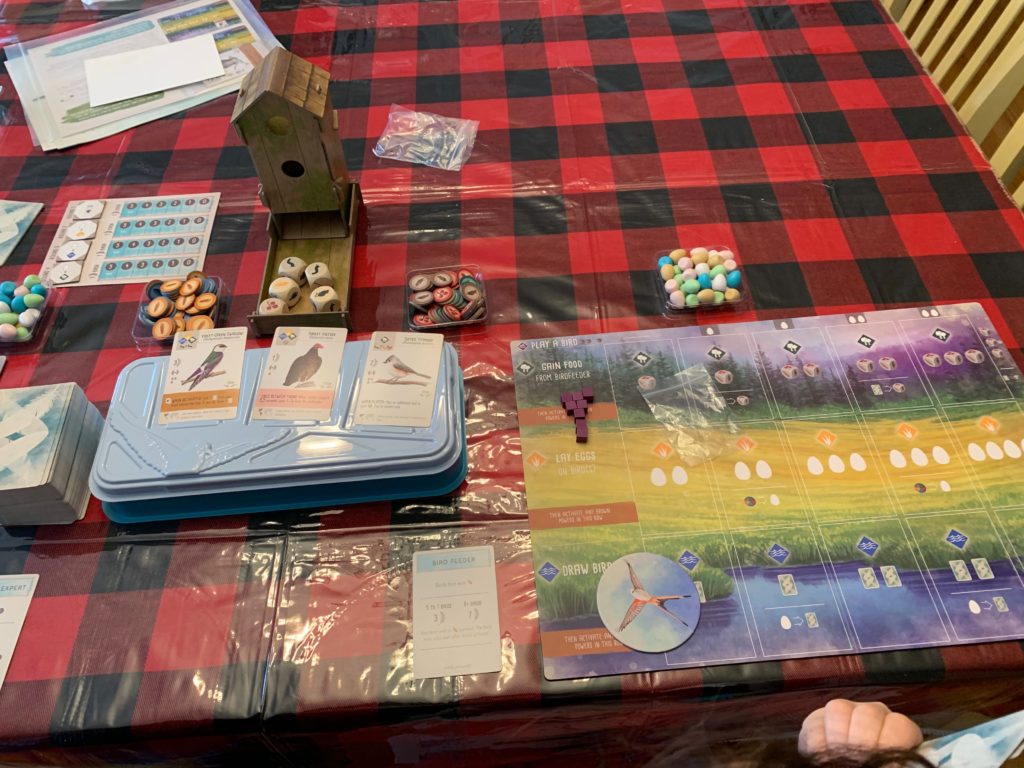
Gameplay
As I mentioned before a game of Wingspan plays out over 4 rounds. Each round, players will take turns performing one of 4 actions by placing one of their cubes in the left most open spot of that action row. The 4 actions are:
- Playing a bird card – Pay the food cost of a bird in your hand (and sometimes eggs) to play it in the respective habitat on the player board.
- Collect food – Take a die from the bird feeder and gain that food token, then activate the birds in the forest row from right to left.
- Lay eggs – Collect some eggs from the supply, place them on bird cards, then activate the birds in the grasslands row from right to left.
- Draw bird cards – Take some of the bird cards on display or the top card from the bird deck then activate the birds in the wetlands from right to left.
Each of the actions that involve activating bird cards in the row is really the heart of the game. Every time you take one of these row actions, you then get to activate all the brown bird powers that came before the space in that row. Some birds you place there will have one time “when played” effects while birds with pink actions will trigger when a condition around the table is met by the players during the round. Add more birds, take more actions, build better combos.
At the beginning of the first round players will have 8 turns for the round and each successive round will reduce the number of player turns that round by 1. The discarded cubes are used to track end round scoring bonuses between the players. By the last round, players will have only 5 turns before the round is over and final scores are tallied.
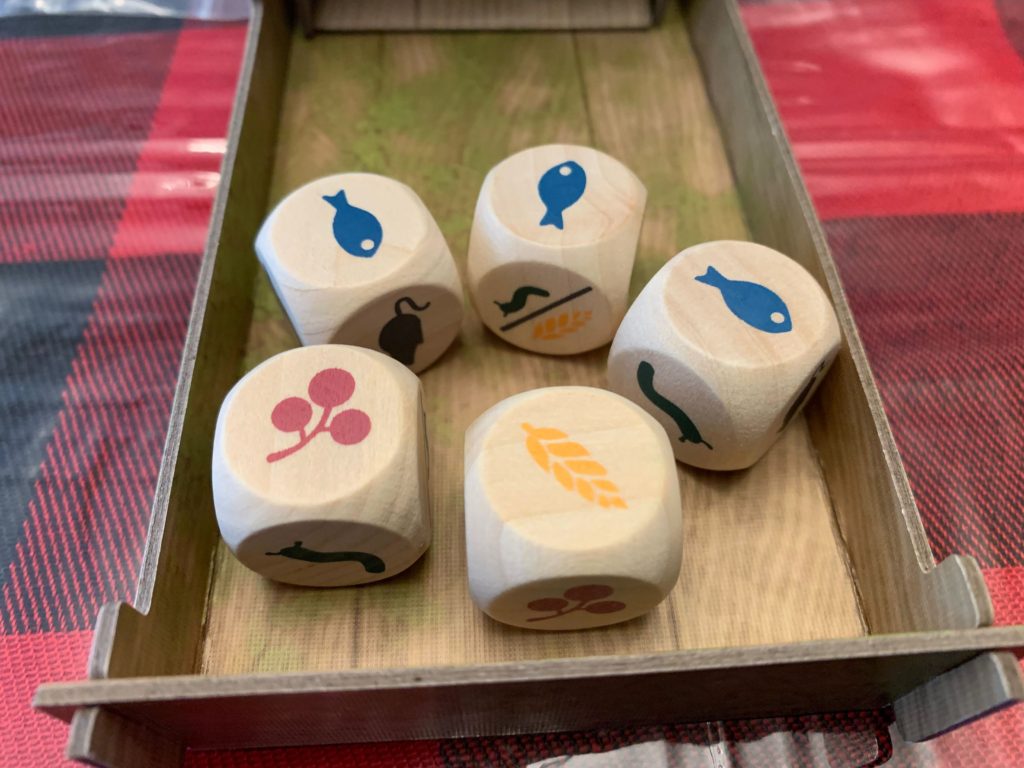
End Game
Once the final round is complete players will score their habitat based on several criteria to determine the winner:
- Point values of the birds in the players habitat. All birds have end game points associated with them these will be added and scored. Birds in your hand do not count.
- Eggs laid on cards. 1 point for each egg on a bird card in the habitat.
- Food stored on bird cards. 1 point for each food token stored on a bird card in your habitat.
- Tucked bird cards. Some birds are predators and will take other bird cards. These cards are tucked under the predator card and are scored 1 point for each tucked card.
- End of round bonuses. Points for the end of round bonuses are added and scored.
- Bonus cards. If you have achieved the criteria for the bonus card you received at the beginning of the game, you will score that.
After all scores are totaled the player with the highest score is declared the winner.
Wingspan Impressions
Even though I am not super into the theme, I cannot deny that this is a really good game. The blueprint of simple actions with deeper strategy is really on display and it is all about the cards! Optimizing your rows of birds to get the most out of your habitat is key. Watching your combos and tableau grow as the game progresses is awesome. While I was somewhat paying attention to other players actions I will say how they played did not really impact my play style in any of our games. For some, this may be off putting if you crave higher levels of player interaction in your games. I also did not think that 4 rounds would be enough to get an engine going but I was pleasantly surprised to see that after the 4th round I had a pretty complete tableau with lots of eggs sprinkled about.
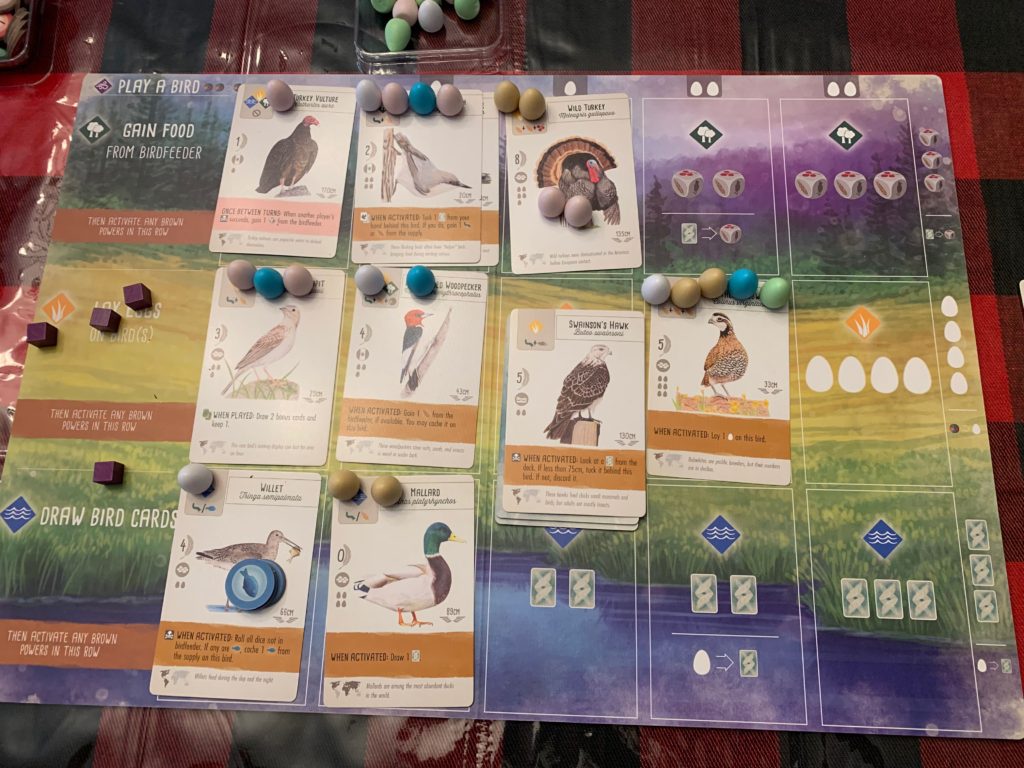
The gameplay is very smooth and how actions are played is super intuitive. This is a game that can be taught to newer gamers and serve as a nice jumping off point to more complex games. At no point was I or the rest of the players lost in what to do next. Iconography is crisp and clear, and while there is some complexity in the bird cards themselves, all the info is there and spelled out how the card works when played or activated. While not the most complex game I have played, it does strike a good balance between being accessible to new players while still keeping experienced gamers engaged. I will say that if I am with a group of experienced gamers this may not be my first choice. Not because it not a good game, but rather my experienced group needs more complexity to be engaged. Also, during our plays one strategy did seem to win more than others, laying lots of eggs. I suspect as I play more there will be other winning strategies that will be uncovered, but for now that seems like the strategy we gravitated towards out of the gate.
Components
We may have gravitated towards the egg strategy partially because they are a really cool and tactile component of Wingspan. Much like all Stonemaier games, components in Wingspan are a cut above. From the food dice, the bird house dice tower you roll them out of, the eggs, and even the feathery feel of the rulebook. It sounds weird to say this but all the components have this light and soft feel to them that I am sure is not by accident. While I have the plastic version of the game, the publisher has taken even further steps to ensure all copies of Wingspan going forward are plastic free. I have to give some extra points here for taking the actions to make the game as eco friendly as possible.
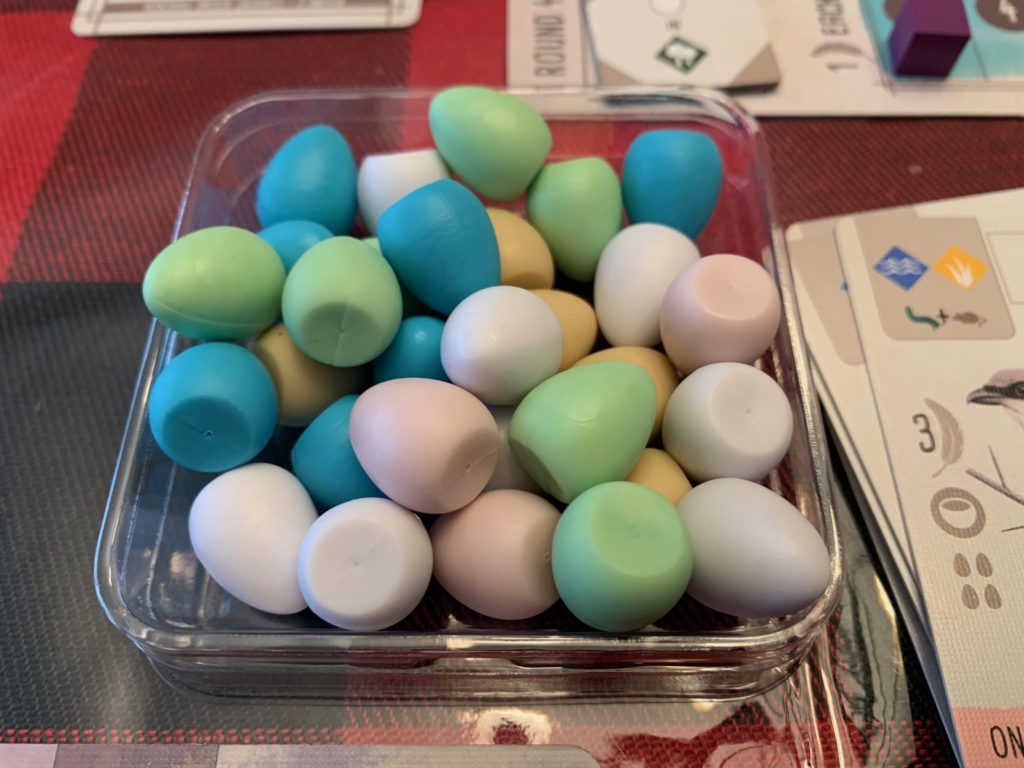
Wingspan Final Verdict

Smooth gameplay and accessibility as a gateway (plus?) game for people getting into the hobby is where I think Wingspan shines. I can see myself being more than happy coming back to this to play with casual gamers but if it is my experienced group, Wingspan may see less burn from us. With that being said, the game nails everything it sets out to do and really should be a staple in any modern board game collection, even if birds really aren’t your thing.





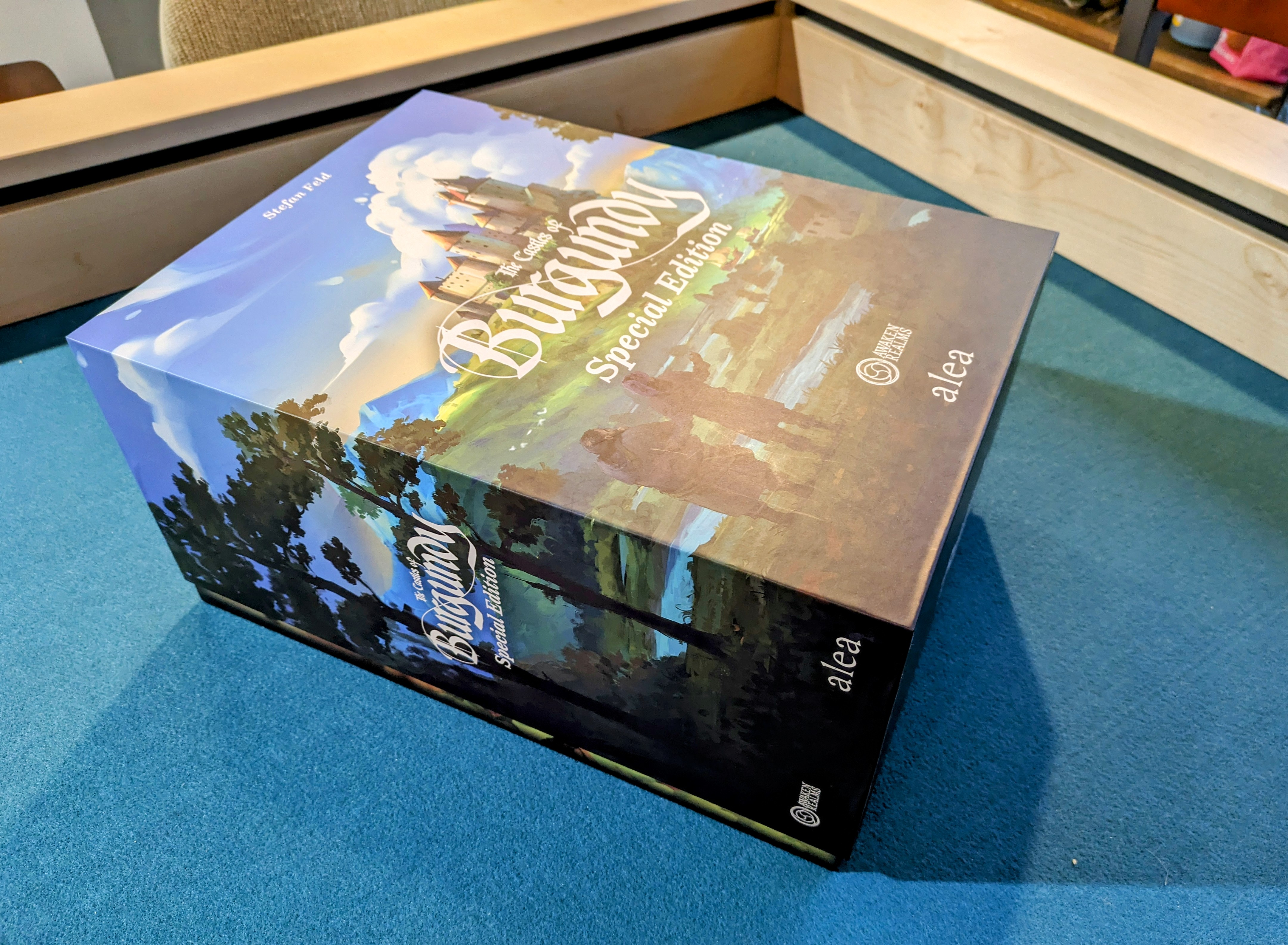
Leave a Comment